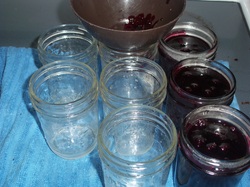
Well, sometimes it does take all day. If you're canning 100 jars of apricots, you know it's going to take a while.
If you have just a little bit of fruit, though, it can be a little project.
Part of the simplicity of this is that this fruit already contains enough pectin to gel; it just needs sugar and cooking. Other fruits high in pectin are apples (and things in the apple family, including rose hips), citrus (see Easy Orange Marmalade), and berries.
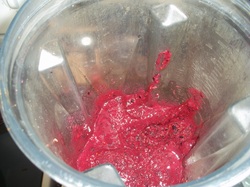
I started with 6 pounds of washed currants, then pureed them in the blender.
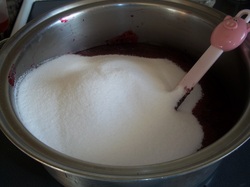
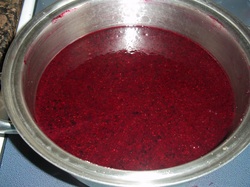
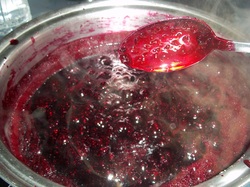
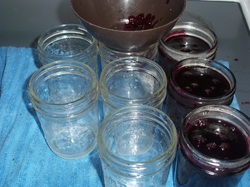
The easiest way to sterilize them, if you remember ahead of time, is to run them through the dishwasher on the "sanitize" cycle. Since I didn't think of that in time, I used bleach- about a teaspoon of bleach in one jar, with 1/4 c. water. I put a lid on the jar, shook it well, then poured the bleach water into the next jar and repeated until they were all done. I let them sit for five minutes, then drained and rinsed them.
So do you HAVE TO sterilize? No, but there may be microorganisms in your jars that cause mold to grow in your jelly. I haven't found that to be an issue when I'm sealing jars, but it shortens the fridge life of unsealed jars. If the jars are sterilized, I can get a good year out of unsealed marmalade (sometimes longer), but usually closer to 4-6 months if the jars were not sterilized first.
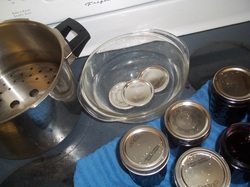
Meanwhile, I prepped the sealing lids by putting them in almost-boiling water, then letting them sit 5 minutes to soften the sealing compound.
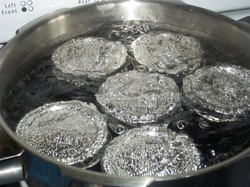
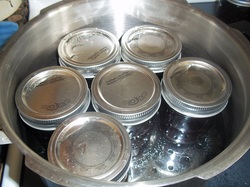
So I dumped half the water out of the pot to expose the jar tops, then lifted them out using a pot holder.
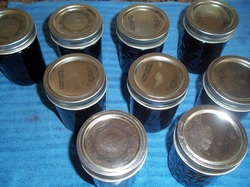
Then I cleaned up while occasionally hearing that musical "pop" that announces a jar has sealed.
The whole process took less than one hour.
After they cooled, I took the rings off, washed them, and labeled them with contents and date.
Some of them got an extra label, since I found one for nutritional content of black currants:
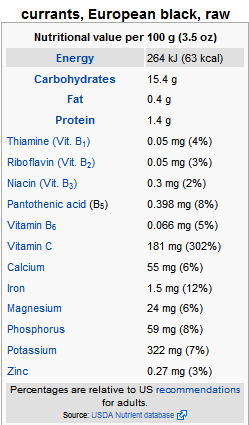
Those currants have some good stuff in them!
Part of the carbohydrates listed is pectin- a soluble, nondigestible fiber. It helps you feel full longer, and not only helps scrub out your insides, but helps make it hospitable to friendly bacteria (probiotics). This last feature makes it a "prebiotic".
Cool stuff.
 RSS Feed
RSS Feed